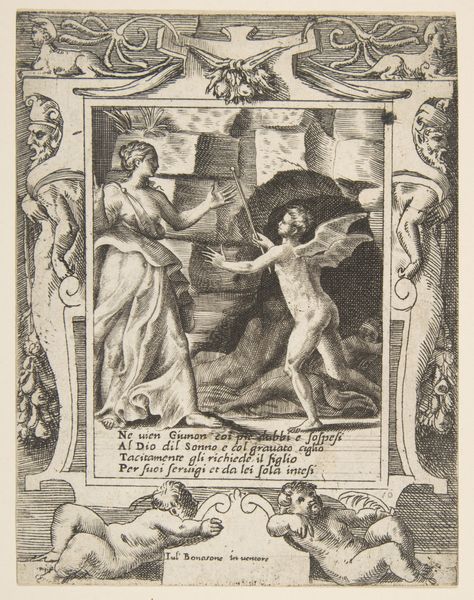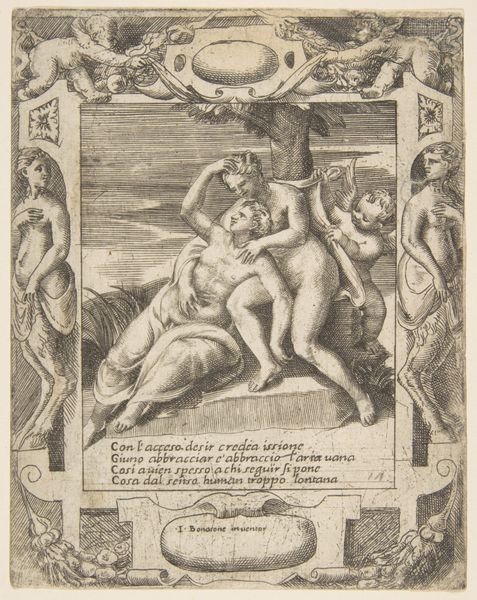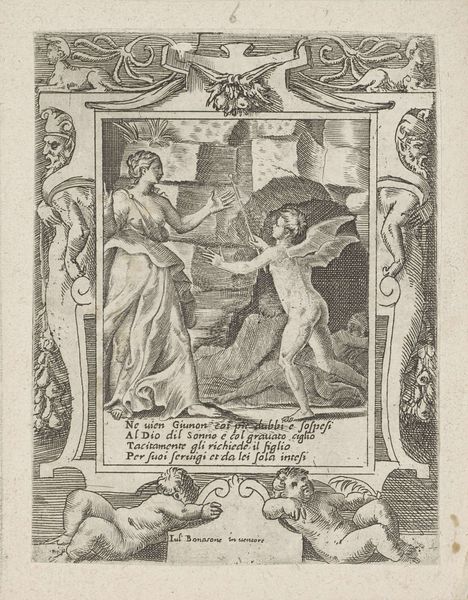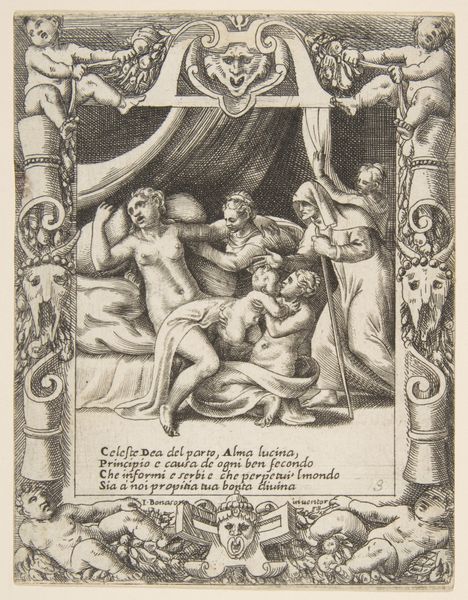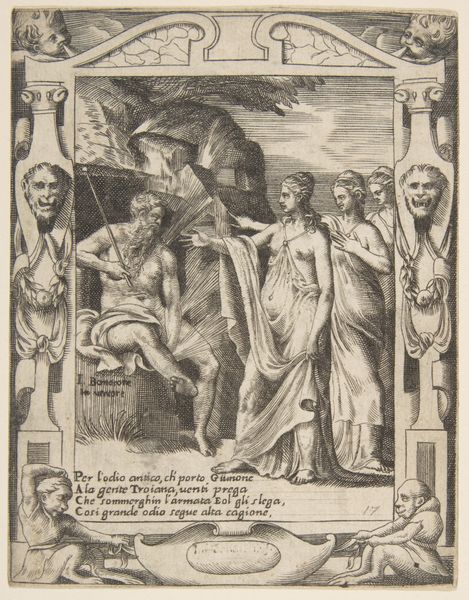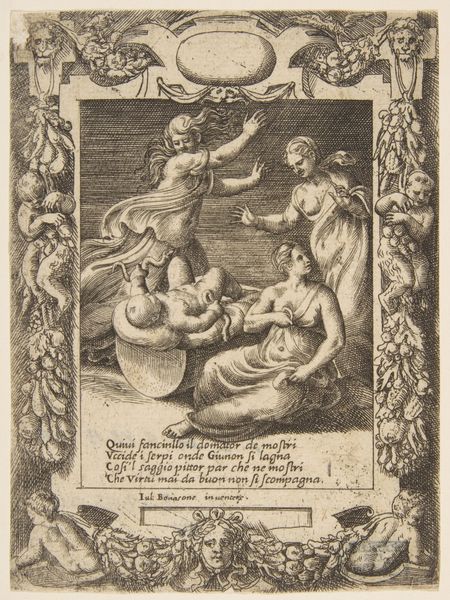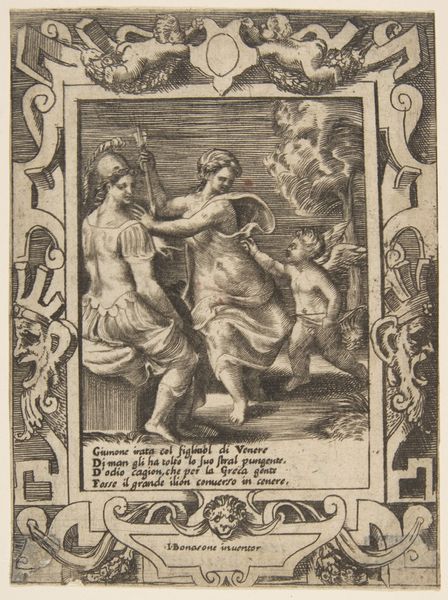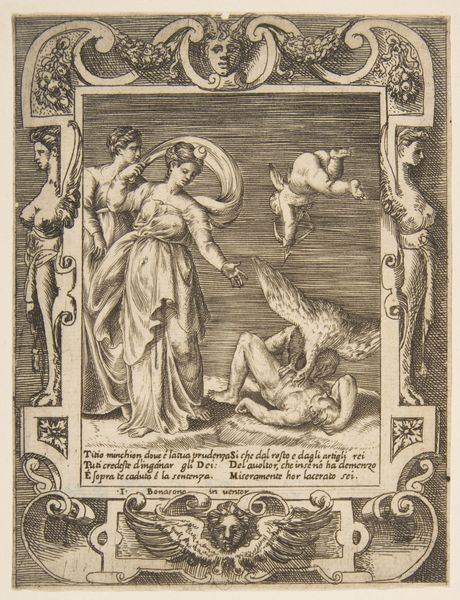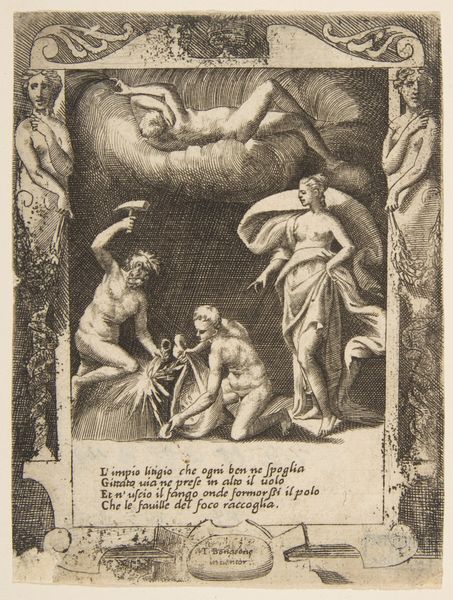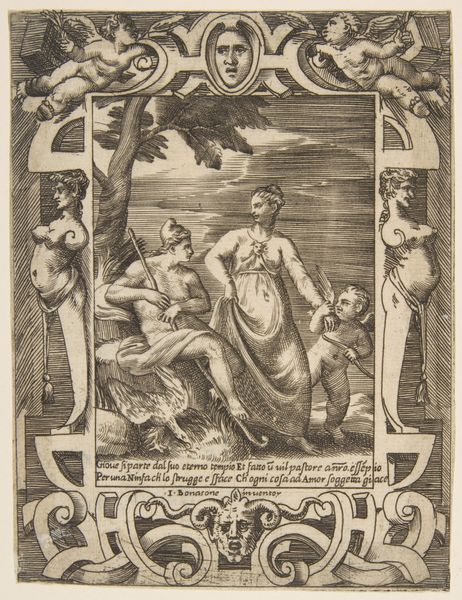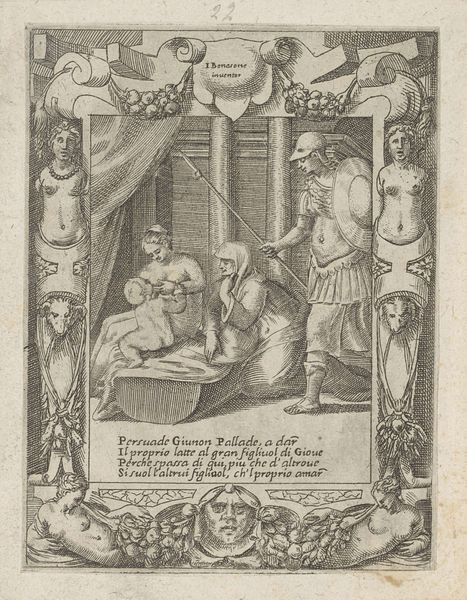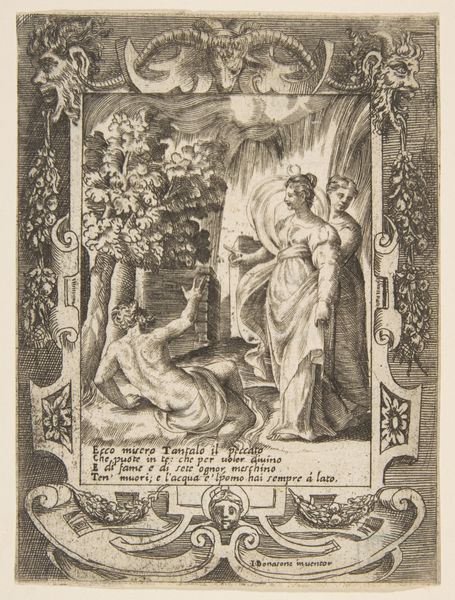
Jupiter tells Juno of his love, set within a frame, from "Loves, Rages and Jealousies of Juno" 1531 - 1576
0:00
0:00
drawing, print, engraving
#
drawing
#
allegory
# print
#
mannerism
#
figuration
#
form
#
pencil drawing
#
line
#
history-painting
#
italian-renaissance
#
nude
#
engraving
Dimensions: sheet: 5 5/16 x 4 1/8 in. (13.5 x 10.4 cm)
Copyright: Public Domain
Curator: This is "Jupiter tells Juno of his love, set within a frame, from 'Loves, Rages and Jealousies of Juno'," a print by Giulio Bonasone dating from between 1531 and 1576. The piece combines engraving and drawing techniques. What's your first take? Editor: There's a feverish energy here, an almost claustrophobic sense of romance unfolding within these meticulously etched lines. It feels very dramatic, don’t you think? Curator: Absolutely. And that drama is manufactured not just by the scene depicted, but by Bonasone's process. Notice the clear differentiation of foreground and background, achieved through varying the density of the lines. Consider, too, the labor involved. Each line, a deliberate act of incision into the plate, building towards the final composition that we see before us. Editor: It's funny; thinking about all that labor almost makes the myth itself feel…constructed. As if love and jealousy themselves are products, commodities exchanged within this frame. It's so dense, almost suffocating, and makes me think how these grand, mythological tales become part of our social fabric. Curator: Precisely. Prints like this weren't just artistic expressions; they were methods of circulating narratives and visual ideas. The social context is essential here. Bonasone was participating in a print market where mythology, presented with elegance, could both entertain and instruct. Editor: I find it fascinating how the figures almost spill out from the central scene. The frame becomes part of the performance, those draped female figures echoing the vulnerability and sensuality within. Do you think the framing adds to the complexity of interpreting this piece? Curator: Undeniably. The frame isn't just decorative; it functions to compartmentalize, and almost elevate, the drama. By visually enclosing Jupiter's seduction of Juno, the piece invites contemplation of the dynamics of power, lust, and perhaps, the performance of marriage itself. Editor: A performance indeed. Makes you wonder how much the 'loves, rages, and jealousies' were fueled by social pressures then. Thinking about it, seeing these immortal characters grapple with utterly mortal issues— well, it shrinks the gods, doesn’t it? Curator: That’s right. This print speaks volumes about how mythology functioned in the Renaissance— less about deifying, more about reflecting and refracting the human condition. Editor: Well, seeing this piece through a new lens has shifted its aura from theatrical spectacle to intimate observation. Thanks.
Comments
No comments
Be the first to comment and join the conversation on the ultimate creative platform.
